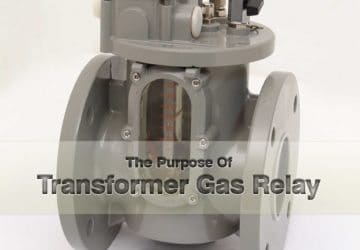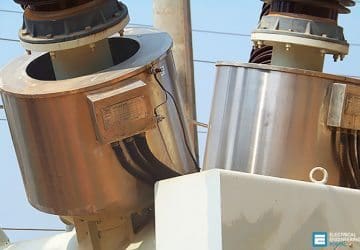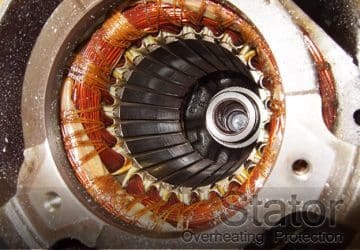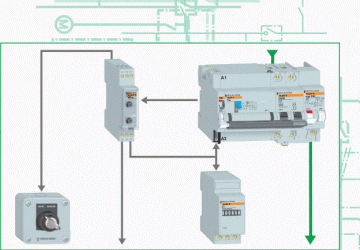The Role of Fuse in Low Voltage Systems
A fuse is the very important protective device used to automatically disconnect a live circuit when a predetermined value of current & or time of predetermined current is exceeded. To simplify, fuse is actually the wire designed to melt, and thereby… Read more
Dec 11, 2012 | By Edvard Csanyi

What Is The Basic Insulation Level (BIL)
Insulation levels are designed to withstand surge voltages, rather than only normal operating voltages. Since the transmission & distribution lines and substation equipment are protected by surge arresters draining the surges rapidly before the insulation is damaged, the arrester must… Read more
Dec 03, 2012 | By Edvard Csanyi

The Purpose Of Transformer Gas Relay
The transformer gas relay is a protective device installed on the top of oil-filled transformers. It performs two functions. It detects the slow accumulation of gases, providing an alarm after a given amount of gas has been collected. Also, it… Read more
Nov 29, 2012 | By Edvard Csanyi

Surge Protection for Frequency Converters
In principle a frequency converter consists of a rectifier, a d.c. link converter, an inverter and of the control electronics (Figure 1 above). At the input of the inverter the single phase or interlinked, three-phase a.c. voltage is changed into a… Read more
Nov 26, 2012 | By Edvard Csanyi

Purpose of Miniature Circuit Breakers (MCBs)
Miniature circuit breakers (MCB) are primarily designed to protect cables and lines against overload (thermal) and short-circuit (electromagnetic). They thus care for protecting this electrical equipment against excessive temperature rises and destruction in the event of a short-circuit. They meet the requirements… Read more
Nov 24, 2012 | By Edvard Csanyi

HV Instrument Current Transformers in T&D
Electrical measurements on a high-voltage transmission and distribution systems cannot be made practically or safely with direct contact to the power carrying conductors. Instead, the voltages and currents must be brought down to a safe and usable level that can… Read more
Nov 23, 2012 | By Edvard Csanyi

Stator Overheating Protection
All motors need protection against overheating resulting from overload, stalled rotor, or unbalanced stator currents. For complete protection, three-phase motors should have an overload element in each phase. This is because an open circuit in the supply to the power… Read more
Nov 19, 2012 | By Edvard Csanyi

Principles and Characteristics of Distance Protection
Distance relays are one of the most important protection elements in a transmission line. These relays may sometimes be set based in percentages of the line impedances, for example a typical setting for zone 1 is 80% of the impedance… Read more
Nov 13, 2012 | By Edvard Csanyi

Steps to Ensure Effective Substation Grounding (Part 2)
Continued from previous article: Steps to Ensure Effective Substation Grounding (1) In previous technical article (part 1) was explained first five steps that will ensure a reliable, safe and trouble-free substation grounding system. Here we will explain the last six steps:… Read more
Nov 10, 2012 | By Edvard Csanyi

Steps to ensure effective substation grounding (Part 1)
An electrical substation is a critical resource in a power system. Safe operation of a substation calls for a properly designed and installed grounding system. A well-designed grounding system will ensure reliable performance of the substation over its entire service life. How does… Read more
Nov 09, 2012 | By Edvard Csanyi

Application of Circuit Breakers in IT Networks
IT supplies are used to prevent that a ground fault leads to immediate disconnection of the affected circuit like in a grounded system. Although a first ground fault results in a displacement of the potential of the entire supply, continued… Read more
Nov 03, 2012 | By Edvard Csanyi

Transformer Differential Protection Principles
Similar to bus protections, transformers are protected by differential relays. Inter-winding faults (short circuits) and ground faults within power transformers can be detected by this protection scheme. Failure to detect these faults and quickly isolate the transformer may cause serious… Read more
Nov 01, 2012 | By Edvard Csanyi

Smart and safe protective shutdown of LV system with selectivity
From the point of view of the operational safety and reliability of an entire low-voltage installation, it is usually desirable to specifically isolate the part of a system affected by a short-circuit in order to prevent spreading of the fault. Selectivity… Read more
Oct 30, 2012 | By Edvard Csanyi

Overcurrent protection of transformer (NEC 450.3)
The overcurrent protection required for transformers is consider for Protection of Transformer only. Such overcurrent protection will not necessarily protect the primary or secondary conductors or equipment connected on the secondary side of the transformer. Introduction Overcurrent protection of transformers… Read more
Oct 08, 2012 | By Jignesh Parmar

Disturbances In LV Networks Due To Surges
There are two types of surge: those generated by a lightning impact and those resulting from electrical switchgear switching operations. Surges resulting from lightning strokes (see figure below) can affect all electrical installations. Consequently, they are without doubt the main… Read more
Oct 06, 2012 | By Edvard Csanyi


